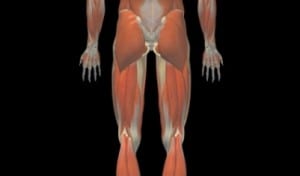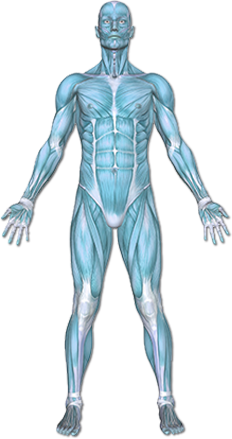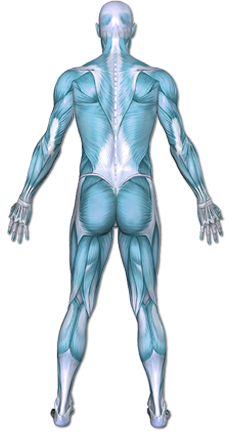Hamstring Strain
A hamstring strain is an injury to the muscles in the back of the thigh. These muscles run from above the hip to the knee joint. A strain is a series of small tears in the muscle. The tendon attached to the muscle may also have damage.
Hamstring strain is a common sports-related injury.


Copyright © Nucleus Medical Media, Inc.
This content was created using EBSCO’s Health Library
A hamstring strain can be caused by:
- Stretching the muscle too fast and/or too far.
- Suddenly putting stress on the muscles when they are not ready for the stress.
This content was created using EBSCO’s Health Library
Factors that may increase your chance of having hamstring strain include:
- Participation in sports that require bursts of speed. This includes track sports like running, hurdles, or long jump. Other sports include basketball, soccer, football, or rugby.
- Previous hamstring injury
- Fatigue
- Overexertion
- Tight hamstrings
- Imbalance of hamstring and opposing quadriceps muscle strength
- Using the muscles too much in one day
- A direct blow to the muscles
This content was created using EBSCO’s Health Library
Symptoms may include:
- Pain and tenderness in the back of the thigh
- Stiffness in the hamstrings
- Weakness in the hamstrings
- Bruising on the back of the thigh, if blood vessels are broken
- Popping or snapping sensation as the muscle tears
This content was created using EBSCO’s Health Library
The doctor will ask about the symptoms, physical activity, and how the injury happened. The injured area will also be examined. Imaging tests may include:
- X-rays
- CT scan
- MRI
This content was created using EBSCO’s Health Library
Your physical therapist will design an individualized treatment program specific to the exact nature of your injury and your goals.
The First 24-72 hours
Physical therapy may include: o Resting the injured area by avoiding activities that cause pain. o Ice, elevation and compression to reduce pain and swelling.
Range of motion
It is common for an injured area to become stiff following an injury. As the pain subsides, the therapy program may include gentle flexibility exercises such as stretching.
Muscle strength
Strengthening will be an essential part of the rehabilitation program. The physical therapist will evaluate leg strength and prescribe specific exercises to restore balance and function.
Manual therapy
Many physical therapists are trained in manual therapy techniques that can be targeted to specific areas and injuries. These techniques are intended to manipulate muscles and joints to improve motion, flexibility, and strength. These techniques may be an essential intervention for those injuries and dysfunctions that are difficult to treat on your own.
Functional training
As you regain flexibility and strength, the body will have to re-learn how to move again. This process is exact and balances progression with protection of the previously injured area. The therapist will guide you through this last phase with specific activities that directly relate to the long-term goals.
This content was created using EBSCO’s Health Library
To reduce the chance that you will strain your hamstrings:
- Keep your hamstrings strong so they can absorb the energy of sudden physical stress.
- Learn the proper technique for exercise and sporting activities. This will decrease stress on all your muscles, including your hamstrings.
Warm up and stretch before vigorous activity.
This content was created using EBSCO’s Health Library
This content was created using EBSCO’s Health Library


